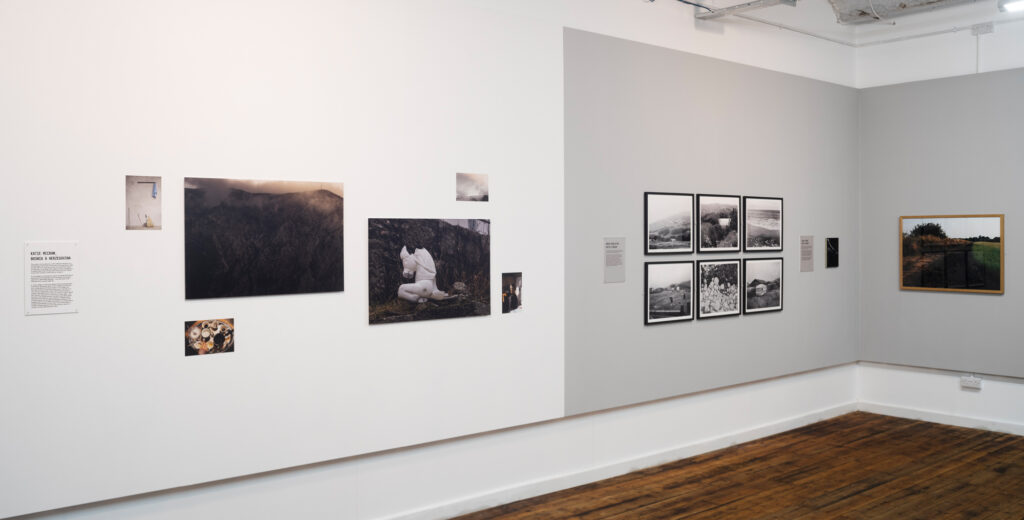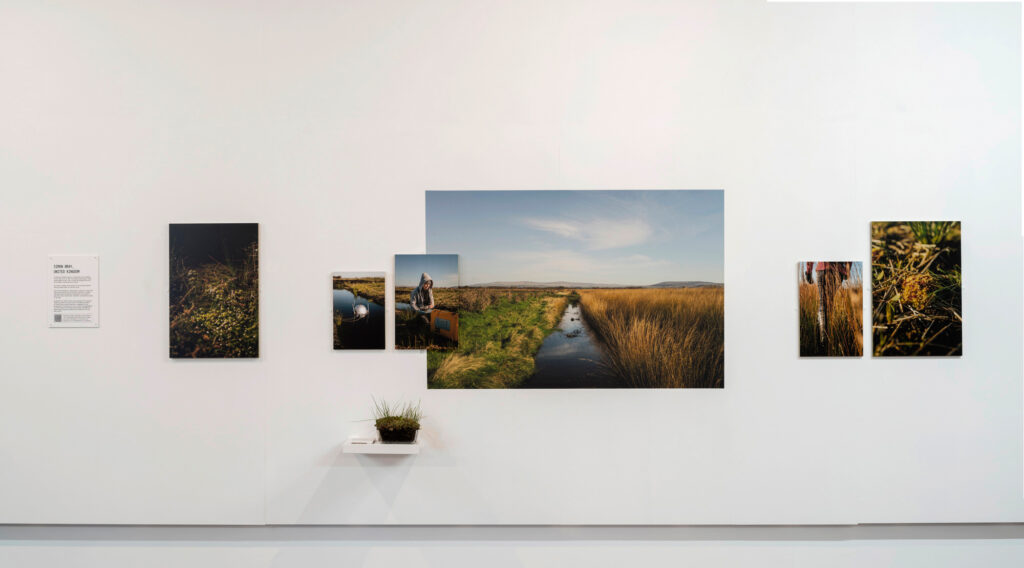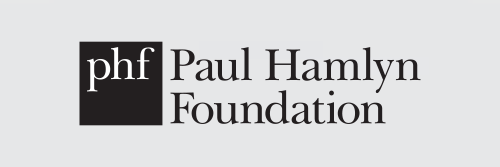


LOOK Photo Biennial 2022: Climate. Corridor8 review
This review by Leah Binns was originally published by Corridor8.
Climate change, often considered to be the single most prevalent social issue of our time, lies at the undercurrent of many contemporary exhibitions despite being notoriously difficult to depict. At once ubiquitous and ungraspable, the climate crisis is an example of what eco-philosopher Timothy Morton calls a ‘hyperobject’, something that is so large in scale relative to human beings that it transcends and defies comprehension. Morton argues that climate change is something we notice on a daily basis, that we sense the existence of due to its residual imprint on everyday life, but in its entirety exceeds our grasp. The sheer enormity of climate change, and the inherent conflict of something that we see but cannot fathom as a whole, is the foundation of the LOOK Photo Biennial 2022: Climate. Returning after a three-year hiatus, this iteration of the LOOK Photo Biennial asks, how can we capture the intangible scope of the climate crisis through the straight-forward, unambiguous medium of photography?
The two exhibitions I visited, in Liverpool’s Open Eye Gallery and Leigh Spinners Mill, hone in on individual stories and local communities, while striving to visualise climate data in new, innovative ways. While several photographers in the shows concentrate on fleeting aspects of everyday life, others reckon with the new materialities of the age of the climate crisis, such as the prevalence of disposable plastics or rubber tyres, or give substance to what is otherwise unseeable, like shifts and fluctuations in polluted air.
In Liverpool’s Open Eye Gallery, the exhibition opens with two projects almost woven together, one set in Trans-Nzoia, Kenya, the other across the Liverpool City Region. Both projects explore trees as the physical incarnation of a community’s relationship with the natural world. Frederick Dharshie-Wissah, whose photojournalism draws attention to global issues, presents ‘On the Ground: The Story of Trans-Nzoia Through Its Trees’, a series completed over the course of a two-month residency based in the Kitale Museum Forest. The images show local people living alongside and planting more trees, while narrating tensions that arise from growing urbanisation. Tree stories are considered here to be a form of mythology that is specific to a single community; they are stories passed down through generations that transform over time.
Similarly, ‘Tree Story – A History of Liverpool City Region Through Its Trees’ is a collaborative project between photographer Andy Yates, writer Bernadette McBride, and local communities. Part of the project collects local peoples’ tree stories, in which personal narratives and the life of a tree are entwined. Across one wall, the individual stories are presented alongside a large-scale photographic portrait of the tree in question. These photographs emphasise the individuality of the tree, through wrinkles on a trunk or by presenting a single, sprawling branch, striking against a white sky. These works speak to an interconnected world; some stories, like one about the Gingko trees native to China that are planted at Liverpool John Moores University, come to symbolise the long-running connection between Chinese communities and Liverpool.
Reading these Tree Stories, I am reminded of how from a young age we’re taught a natural narrative of exchange and reciprocity between human and tree. We provide them with carbon dioxide, they repay us with oxygen. ‘I have had a love affair with this tree’, says one participant. ‘I have known this tree for forty-nine years, man and boy’, says another. The relationships between people and trees are treated with complexity. Trees are often anthropomorphised, we see them as ancient and wise, symbols of longevity, something that was here before we were born and will be here long after our death. They are both our ancestors and our future. Opening the exhibition with these local, tender stories foregrounds the significance of the relationship between trees and individuals, while establishing community as a key theme through which to view the photographs that follow.
In the next room, I feel particularly compelled by ‘A Tyre Never Die’, Andrew Esiebo’s two photographs of waste-tyres in the city of Lagos. As noted in the work’s accompanying text, ‘tyres are symbolic of humanity’s dependency on motor vehicles’. More optimistically, in Esiebo’s work, the tyre can come to symbolise an urban ecology based on re-use. The first image, depicting a large open space cluttered with heaps of tyres, reminds me of Allan Kaprow’s ‘Yard’, a 1961 Happening in New York that consisted of an expansive space filled with rubber tyres. The tyres become their own world for visitors to explore, rearrange, and interact with, newly transformed into playful aesthetic objects. Esiebo similarly resituates the viewer’s understanding from tyres as a commodity towards tyres as creative, reusable objects. The second image is more sparse in its composition. It depicts two tyres acting almost as two people in a landscape, or as a pair of eyes with a direct stare. By suffusing the object with a sense of humanity, the photograph evokes an idea of the tyre’s rejuvenated second life.
For many, fire is the most evocative symbol of the climate crisis, a destructive force that we cannot ignore and whose effects cannot be reversed. In her project ‘Open Fire’, Marilene Ribeiro has taken photographs of Brazil’s natural areas and burnt the photographic film, resulting in charred, distorted images. In some, the burning leaves gaping holes, in others, the surface of the photographs are bubbled with amber tones at once vivid and violent. They speak to the fragility of cultural and natural heritage, particularly poignant in Brazil after the 2015 burning of the Museum of Portuguese Language and the 2018 fire in the Brazilian National Museum. Sharply political, the work prompts us to think of policies and funding decisions that refuse to protect not only nature but cultural institutions, emphasised by Ribeiro’s intervention into the photographic process, and the swelling light that seeps from these images that glow the burnt orange of the sky after a fire.
Martha Gray’s ‘Blueprint’ series collides two familiar motifs – the cyanotype as a highly tactile method of reproducing images, and plastic, as perhaps the ultimate symbol of the current material era. The result is a ‘bioplastic cyanotype’, a photographic method in which an image is printed directly onto a thin sheet of renewably-sourced plastic rather than paper. The images start as screenshots of Google Earth coordinates from areas that have high levels of microplastic pollution, a theme that is then brought into the material and method itself. Looking at these works that depict a natural world filtered through plastic, I reflect on the strange plastic sheen of everything during the pandemic; faces behind warped plastic shields and thick, distorting plastic sheets separating people at shop counters. The images themselves are bubble shapes, richly blue, with a hazy contour. The work’s strength lies in how it reframes a common conception of plastic as a disposable and cheap material, by immortalising it into an artwork.
We tend to ignore the effects of the climate crisis that we cannot ‘see’, but David Kendall’s project ‘Other Lines’ provides new ways of visualising atmospheric pollutants in industrial spaces in Ellesmere Port, using thermal photographies. The six resulting images, three printed and framed physically and three on digital screens, have an almost damp appearance, evoking the fluid, abstract colours of a Gerhard Richter painting on a very small scale. In ominous greys or candescent oranges, there’s something otherworldly and sublime about how Kendall has used the technology of photography to create ethereal results, giving form to the way the effects of industrialism linger impalpably in the air.
Another iteration of the LOOK Photo Biennial, entitled See Change, takes place in the Horrocks Gallery on the fourth floor of Leigh Spinners Mill. The exhibition, which exists in a single room, is curatorially stripped-back, with works untitled and mostly unframed. I am immediately drawn in by Charlotte Dobson’s melancholic and experimental photographic works. Her work explores nature at its most vaporous and intangible. The images are beautiful in how they balance amorphous shapes with precise, intricate details, and how nature’s transient forms become uncanny objects for the viewer to behold. For Dobson, the images evoke a personal story: the loss of her grandmother. This sense of absence is distinct. Her photographic works suspend the ephemeral; dandelions in a monochromatic chiaroscuro and a plant uprooted from its soil refer to how all things are temporary. One image of froth on a shore is oddly figurative in its outline, alluding to the shape of a person lounging on a beach. They are rich with nostalgic effect while eluding conventional narrative.
Nearby, Simon Bray’s photographs examine the ancient material of peat, described as ‘nature’s vault’ due to the way it stores history and its natural process of locking away carbon from the atmosphere. These images, ranging from detailed shots of the dewy, misted Lancashire peatlands, to images of scientists at work examining the soil’s degradation, quietly elevate moss and peat to appear almost mystical in nature.
Depicting small domestic moments alongside sublime landscapes, Katie McCraw’s work explores life in a small, self-sufficient village in Bosnia and Herzegovina. The most touching image in McCraw’s collection is one of a cracked plastic horse in a makeshift landfill site. Since the government’s waste disposal service does not extend to the remote village, the population must act carefully about the amount of waste they produce, not because of the climate crisis, but because they must live alongside the landfill. From a cluttered, eclectic tray of dishes to a gloomy image of a lofty terrain, the bleak tones and sparse compositions of these images highlight how society is leaving certain communities more vulnerable to the effects of climate change than others, while prompting the viewer to reflect on their own relationship with waste and consumerism.
Through his photography, Edwin Huddleston suspends in time the Welsh coastal village of Fairbourne, which will need to be evacuated due to floods by 2050. In one image, a formation of pebbles on the ground evoke the shape of the coastline itself, the village’s future forecasted in these strange shapes. In another particularly solemn photograph, Huddleston makes tangible the tension between the inhabited village and the sea that will one day flood it. At once soft and dark, both quiet and cataclysmic, the work hinges on an uncertain future caused by the climate crisis, captured in a powerful, gloomy greyscale.
Simple in its theme but abundant in its outcome, the LOOK Photo Biennial 2022: Climate investigates photography both as a documentary method and an artistic medium when it comes to reckoning with climate change. While many of the photographs on display cause us to look inward and reflect on our own connections to the climate crisis, the overarching feeling that emanates from the exhibition is one of collectivity. Some of the photographs across these exhibitions, like Huddleston’s images of Fairbourne and Ribeiro’s of Brazil, depict with precision the strange feeling of knowing that the climate crisis will inevitably cause loss and damage to the environment, both locally and globally. Others, like Esiebo’s tyres and Gray’s bioplastic cyanotypes, dwell on how the materials we rely on for industrial growth are impacting our planet. But above all, the works share and exchange perspectives to provoke more empathetic outlooks, and facilitate an approach to the climate crisis rooted in community rather than fear.
Frightening images of scorched earth, derelict landscapes or forests on fire that have come to characterise how we visualise the climate crisis are distinctly absent here. Instead, photography is used with more subtlety and tenderness, as a way to draw the viewer closer to the everyday lives of others, and challenge anthropocentric perspectives by providing new points of view beyond our own.
LOOK Photo Biennial 2022: Climate was at Open Eye Gallery, Liverpool, 15 July – 4 September 2022 and at Horrocks Gallery in Leigh Spinners Mill, Leigh, 9 December 2022 – 5 February 2023.
Tree Stories is an ongoing interactive project aiming to collect as many stories about the Liverpool City Region trees as possible.
Leah Binns is a culture writer based in Merseyside.
This feature is supported by Open Eye Gallery.
Cover and slideshow images by Rob Battersby.

